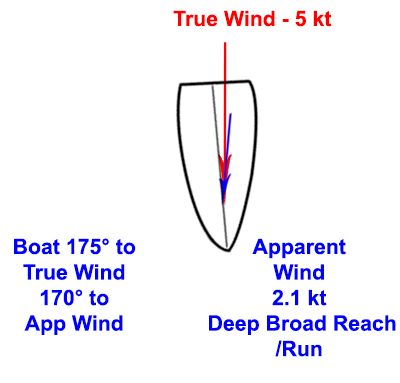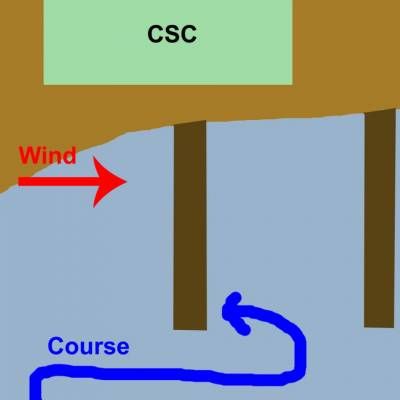Something I’ve found to help students when they’re learning to gybe is to separate the gybe from the act of turning the boat. A gybe can require no turning at all, and understanding this will improve your gybes and reduce your likelihood of capsizing.
Most of the time, the reason we are gybing is because we want to turn and go the other way while sailing downwind. Maybe we've reached Ashby Ave and we have to head back before we start to feel the disapproving glare of the day leader through their binoculars. Or we're doing tight circles around a buoy and have to keep turning through the gybe. But really, gybing has nothing to do with turning, other than if we're turning downwind, we have to eventually gybe or we just can't continue the turn.
The gybe itself is nothing more than changing tacks (from port to starboard or vice versa) while sailing downwind. Or to put it more simply: a gybe is flipping the sail from one side of the boat to the other. If you’re on a dead downwind run, there is no turning needed. In fact, there are reasons to gybe that don't involve a turn at all. A common case is during racing--if you're on a dead run and want to obtain right of way by switching from port to starboard tack. No turning needed. Or maybe you're headed back home and the wind shifts a bit and you realize you're now sailing by the lee, so you flip the sail to get yourself out of accidental gybe territory. No turning needed.
I've noticed a lot of students (understandably) connect the turn and the gybe and want to turn through the gybe, from broad reach to broad reach, which can often result in a capsize. To help disconnect the two actions I've started doing this exercise:
- Get on a dead run. Get the jib to cross to the center of the boat and try to keep it there. Watch out for the accidental gybe, and tell your crew to do the same. If you have crew you may want to have someone hold the boom in place to avoid a gybe before you're ready. They'll also be able to feel the main starting to get back-winded, so they can let you know you've turned too far off the wind. Maintaining a dead-run can in-itself be tricky, and if you can hold this reasonably well in waves, you're off to a good start!
- Look at what you're heading towards on the horizon. Try to find a fixed reference point.
- Now gybe. Try to keep the boat headed dead downwind. Use your reference point on the horizon if it helps. Once the wind catches the sail on the other side, it will try to turn the boat up, so maintaining your heading will require some counter steer with the tiller. Think of it as a light version of the S-turn.
- Once you're confident you're still on a run, gybe again.
- Now do it faster, back and forth, while maintaining course.
- Try to get down to a few seconds between gybes.
- By now you're probably at the rocks, so better tack your way back up to the restaurant and do some more.
I've found this tends to create a light bulb moment and hopefully makes gybing in general a little smoother.










